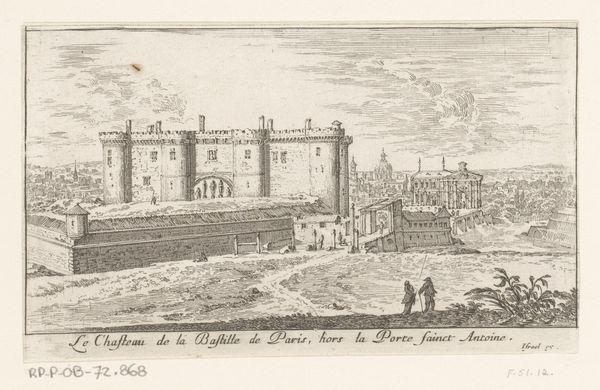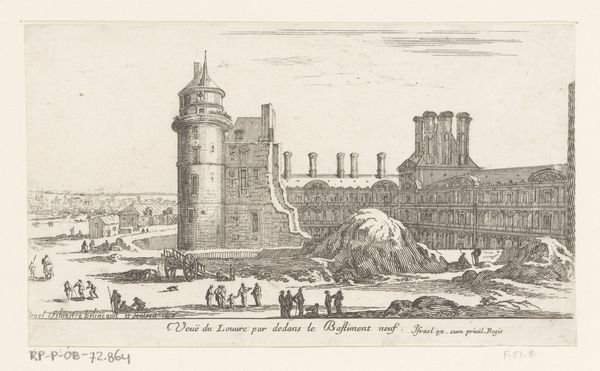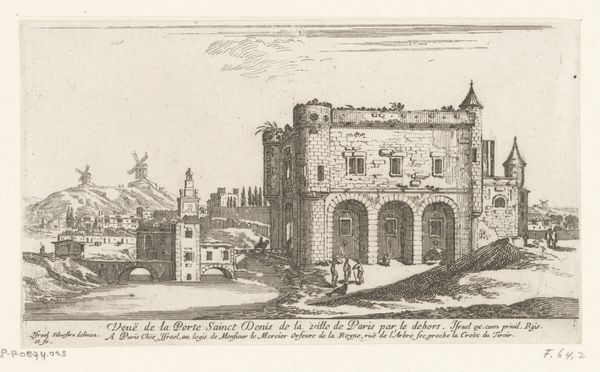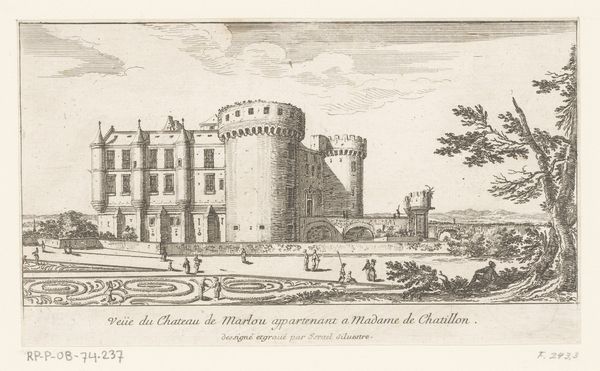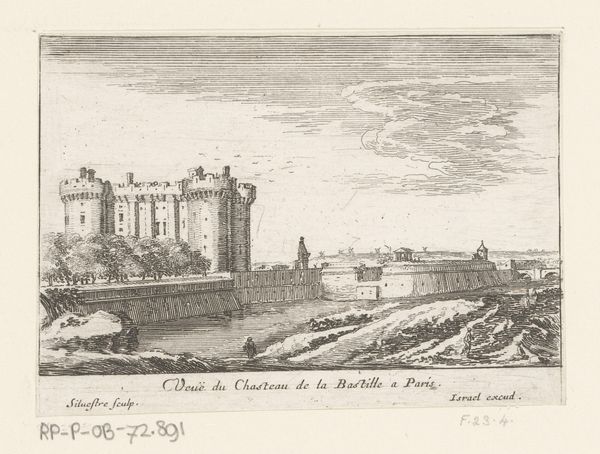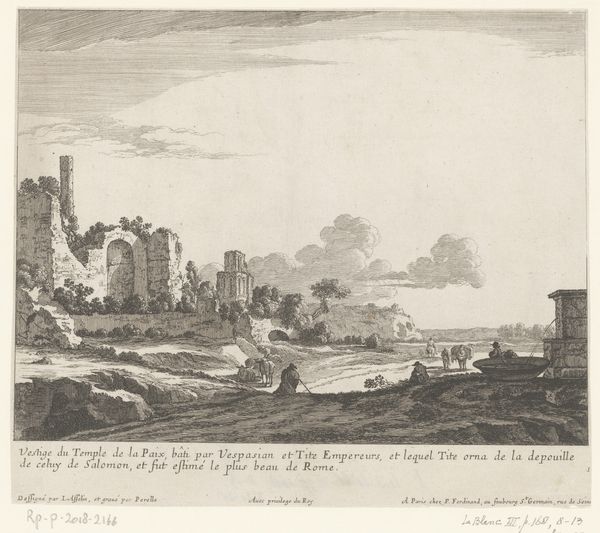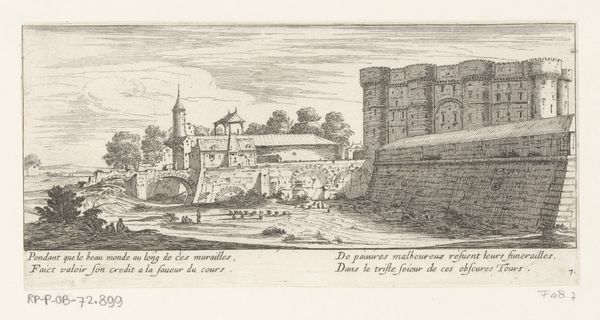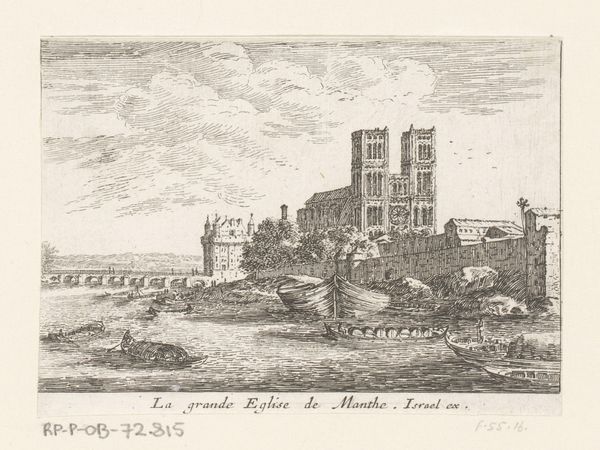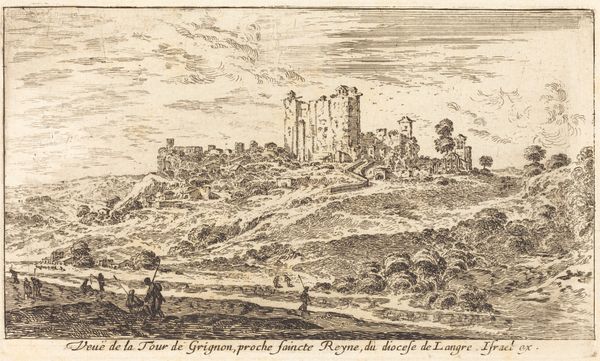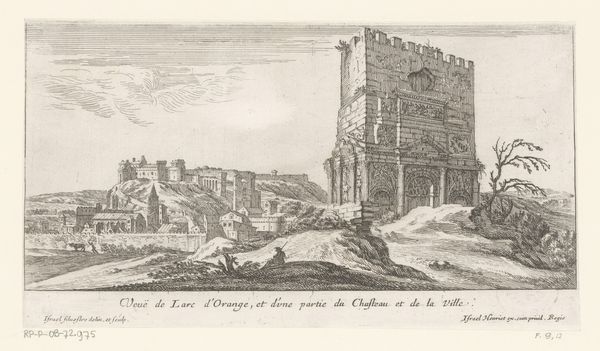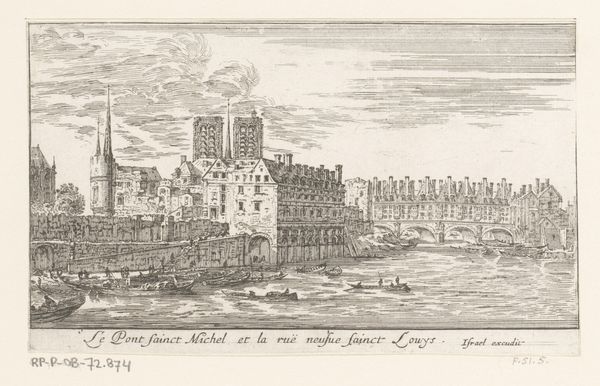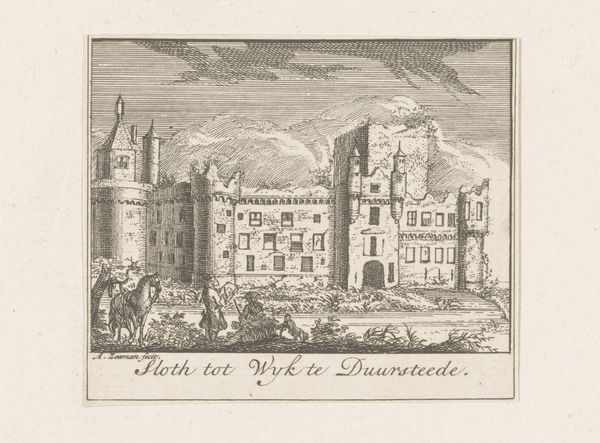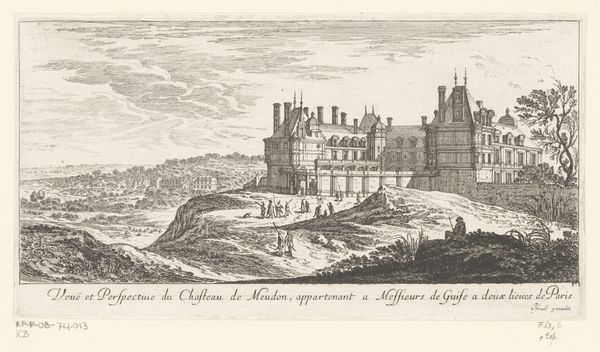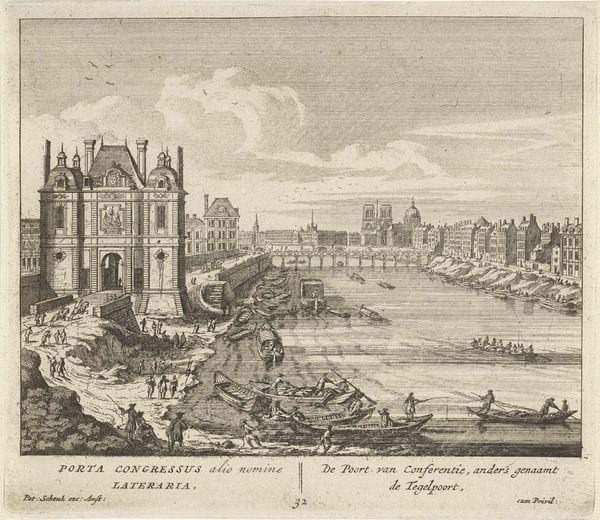
print, etching
#
baroque
# print
#
etching
#
landscape
#
etching
#
cityscape
#
history-painting
Dimensions: height 100 mm, width 170 mm
Copyright: Rijks Museum: Open Domain
Curator: The etching before us, crafted by Israel Silvestre in 1652, offers a glimpse into the urban landscape of 17th-century Paris, focusing on the formidable Bastille. It’s currently held at the Rijksmuseum. Editor: My first impression is one of almost unsettling activity juxtaposed with imposing stillness. The fine, precise lines of the etching create this tension; the Bastille looms, yet the figures in the foreground are bustling, seemingly unconcerned. Curator: Indeed. The interplay of light and shadow achieved through the etching technique gives depth to the stone walls of the Bastille, emphasizing its scale and power. Consider the use of hatching and cross-hatching—notice how Silvestre evokes texture and form, making the fortress feel almost palpable. Editor: But what does that palpable presence *mean*? We can’t ignore that the Bastille became a symbol of royal tyranny, and later, revolution. Seeing people milling about, even playing, near this prison—it forces a question: did they truly not feel the weight of that power, or was it a calculated obliviousness, a necessary act of survival? The etching flattens historical context and reveals this ambiguity. Curator: That is valid. However, focusing purely on form, notice the deliberate composition; the horizontal lines of the walls versus the verticality of the towers, creating a sense of balance but also emphasizing height. This emphasizes the artist's skill in constructing a compelling visual narrative through geometrical arrangements and technical precision. Editor: But what about the stories *not* readily apparent in the composition? This cityscape offers us so little in way of perspective from the lower classes—from those routinely persecuted—that perhaps this image caters too much to the aesthetic sensibilities of its bourgeois viewers and offers little insight into the conditions of imprisonment. We must then consider from what location this image comes and which stories it suppresses. Curator: I find such considerations insightful, and yet I’m consistently drawn to the detail rendered. Each tiny figure, building, even the texture of the clouds. It showcases Silvestre’s mastery of the etching medium. Editor: And those meticulously etched clouds could also suggest an air of instability just before monumental change. For me, this view of the Bastille becomes less a study of structure, but a foreshadowing, an indicator of political storm clouds ahead.
Comments
No comments
Be the first to comment and join the conversation on the ultimate creative platform.
